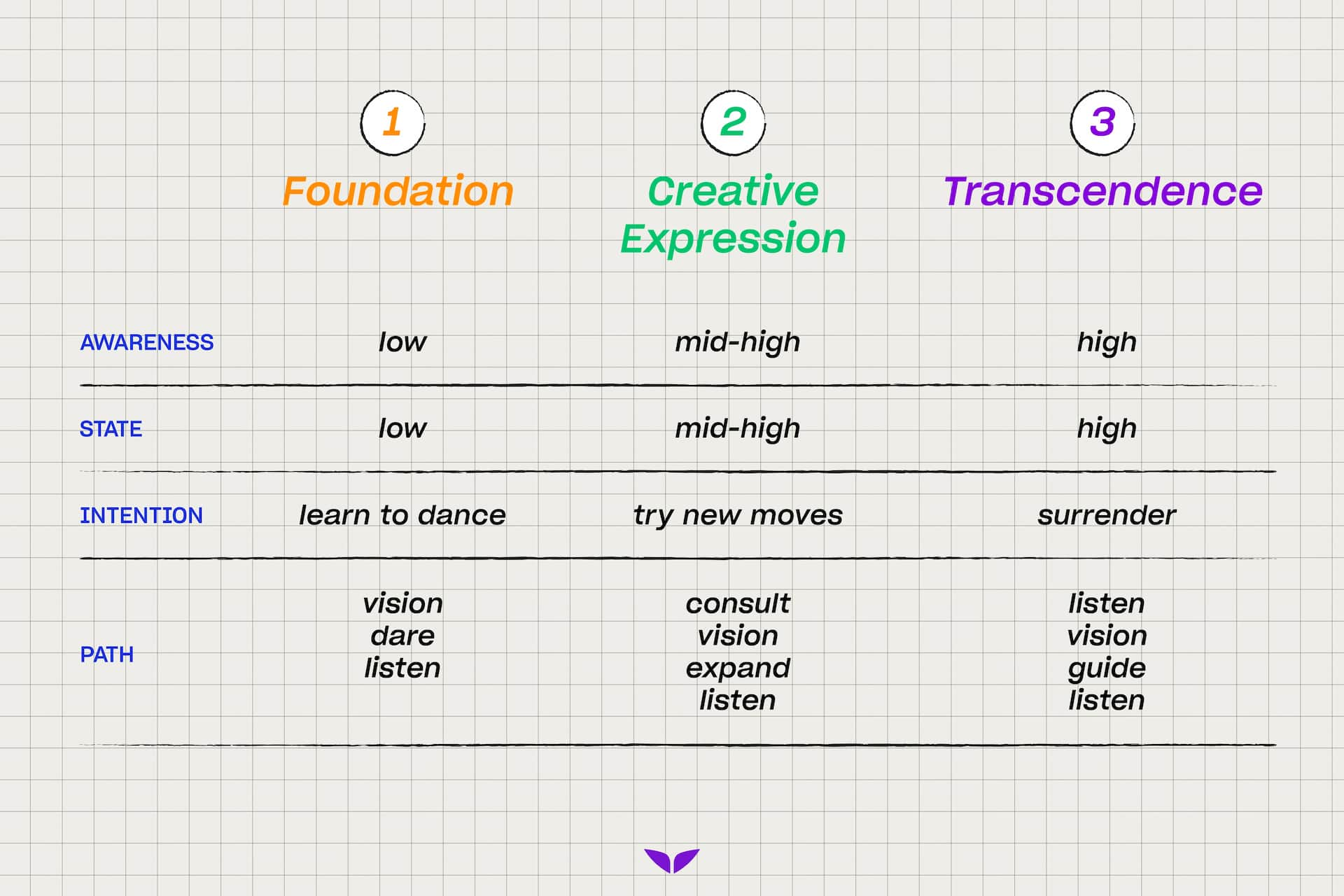Imagine your journey towards a healthier lifestyle as an adventurous hike. Without a map, a compass, or some clearly marked trail, you may find yourself lost in the wilderness, encountering detours and dead ends. That’s exactly what diving into the realm of health and wellness without clear health goals feels like—it’s like going on a hike in the wilderness with no idea which way is north.
Health goals are your trusty compass in this scenario, guiding your steps and keeping you on the right track. They provide direction and purpose to your wellness journey, steering you away from the treacherous cliffs of unhealthy choices and towards the scenic viewpoints of a balanced and fulfilling life.
“Your health is far more up to you than it is to your doctor,” as Eric Edmeades, the creator of WILDFIT, says. So strap on your metaphorical hiking boots, check your compass, and let’s step forward on this trail of discovery.
What Are Health Goals?
Health goals are simply specific objectives you set for yourself to improve or maintain your physical, mental, and emotional well-being. From losing weight to improving cardiovascular health, reducing stress, or even setting the audacious goal of saying adieu to midnight snacking—these are all grand examples of health goals.
They’re about sculpting your best self, not just physically but mentally and emotionally too. It’s not just about crunches and carrots; it’s also about confidence and calmness.
In fact, a 2019 report published in the American Journal of Lifestyle Medicine explains that having a goal is good. However, it takes a solid action plan to bring about real change.
“The world is stacked against us,” says Vishen, the founder and CEO of Mindvalley, at a stage talk at A-Fest 2022 in Jordan. “So you have to take your health into your own hands.”
And your health goals—they’re the first step toward your journey of healthy habits.
How are skill-related fitness goals different from health-related fitness goals?
In the grand adventure of fitness, two paths diverge: one leads to skill-related fitness goals, and the other to health-related fitness goals. The former is a trek focused on honing specific skills—think acing tennis matches or perfecting yoga poses—while the latter trail centers on nurturing overall health and well-being.
These paths, while both scenic and rewarding, serve different purposes in our journey. Here’s a closer look at the two:
| Skill-Related Fitness Goals | Health-Related Fitness Goals | |
| Definition | Goals aimed at improving performance in a specific sport or activity. | Goals centered around enhancing or maintaining overall physical, mental, and emotional well-being. |
| Examples | Acing a tennis match, perfecting yoga poses, and improving running speed. | Losing weight, reducing stress, improving heart health, and enhancing sleep quality. |
| Benefits | Improved performance, increased competitiveness, and mastery of a specific skill. | Enhanced overall health, increased life expectancy, better quality of life, and disease prevention. |
| Focus | Specific, measurable, and often short-term targets tied to performance. | Broad, long-term goals that encompass holistic wellness. |
Both paths are important, and there’s also the option of striking a balance. But the bottom line is, it all depends on what your personal goals are.
Why Are Health Goals Important?
Your health goals hold the key to unlocking a vibrant, fulfilling life. They aren’t just about fitting into that pair of jeans or showing off your biceps at the beach. When you set goals, it’s about nourishing your body, mind, and spirit for a well-rounded and extraordinary existence.
Research even shows that when you set specific long-term health goals, you can experience:
- Improved overall well-being,
- Increased self-confidence,
- Reduced risk of health issues, and
- A greater likelihood of leading a longer and healthier life.
So health goals aren’t just about the number on a scale or how many bench presses you can do. It’s more about setting “life goals” that weave health and happiness together.

How to Set Health Goals
The thing about health and wellness goals is that people are always looking for the shortcut or the “magic pill,” according to Ronan Diego, a holistic health mentor and creator of Mindvalley’s Body Mastery and HoloBody Certification. But here’s the kicker: There isn’t one.
Instead, the magic is in the grind—the day-to-day commitment to those health goals. A 2012 study published in Motivation and Emotion confirmed this. Its results found a positive association between goal setting and mental health outcomes.
So the question is, how do you set them?
“There are differences in how we set goals in an unconscious body and health transformation paradigm,” says Ronan, “and how we set goals in a way that is more conscious in this paradigm of ‘me working with my body’.”
Let’s look at both a little closer.
Unconscious goal setting
You can go about it the traditional way by listing them, absolutely. You want to lose weight, you want to climb a mountain, and so on and so forth—it’s what Ronan calls “unconscious goal setting.”
It’s very straightforward. And you can use SMART goals for this:
- Specific. Your goals should be as specific and clear as possible.
- Measurable. Make them measurable, so you can track your progress.
- Achievable. Make them bold enough to inspire your greatness, but realistic enough to keep you motivated.
- Relevant. Fit them to your unique values and aspirations.
- Time-bound. Have a deadline of when you should achieve them by, so you can prioritize the tasks to get you there.
“This works for a lot of people,” Ronan explains. However, the downside is that “it creates that unconscious relationship with the body.”
Conscious goal setting
Now, to the opposite side—“conscious goal setting.” This is more about working on transforming the relationship you have with your body.
It takes two things into account:
- What is it that you want to do? This is the same as in the unconscious goal setting. It answers the things you want to experience as a human being—be able to run a marathon, deadlift 200 kgs, etc.
- What does your body want to become? This is the second part of conscious goal setting. Here, it’s all about your body’s natural physique and it requires you to follow its cues so that it can reach its most optimal potential.
As any holistic health coach, like Ronan, knows, the ideal is the intersection between these two aspects—or “leader.” It’s kind of like a dance where you take what you want to do and tweak your plans according to what your body allows.
For example, let’s say you want to be able to do the sirsasana (headstand) yoga pose. If your body’s physique is naturally big-boned, get a sense of what it needs—maybe it needs a pre-yoga stretch or to be constantly hydrated—and tweak your plan of action to fit those needs.
The three stages of relationships between you and your body
“When we are thinking about goals and visions, I like to think about three different stages of the relationship that we can have with our bodies,” says Ronan.
Here’s what they’re about:

Guesstimate which relationship you have with your body. Is it at the foundation stage? Or maybe at the creative expression stage? Or the transcendence?
From there, you can set your goals by answering three important questions:
- What do you want to experience in life?
- How do you want to grow and develop yourself?
- How do you want to contribute to the world?
Watch: Find out more about it on Mindvalley’s YouTube.
20 Health Goals Examples
Creating health and fitness goals is the first step toward transforming your health and elevating your life. Whether you’re looking to boost your energy, enhance mental clarity, or cultivate a healthier lifestyle, here are twenty inspiring examples to get you well on your way.
- Get moving. Regular physical activity, such as brisk walking or dancing, can boost your mood, improve cardiovascular health, and increase your overall energy levels.
- Prioritize mental well-being. Make mental health a priority. Practicing mindfulness or meditation can reduce symptoms of anxiety and depression, according to research.
- Nourish with nutrient-rich foods. Focus on incorporating nutrient-dense foods like fruits, vegetables, and lean proteins into your diet.
- Get quality sleep. Quality sleep is crucial for physical and mental well-being. In fact, inadequate rest can contribute to a number of diseases, like obesity and diabetes.
- Hydrate, hydrate, hydrate. Drinking water is, without a doubt, essential for your health. Staying hydrated helps with your digestion, regulates your body temperature, and promotes healthy skin.
- Strengthen social connections. Your relationship with others is part of what you need as a human, so remember to foster those social connections.
- Practice stress management. Incorporate stress-reducing activities into your daily routine. This can include yoga, deep breathing exercises, or journaling.
- Incorporate strength training. This’ll help build muscle, improve bone density, and enhance overall physical strength.
- Enhance flexibility. Stretching exercises like yoga or Pilates can help increase flexibility and range of motion.
- Cultivate gratitude. This is expressing appreciation for the positive aspects of your life.
- Limit screen time. Set boundaries on your devices and aim for a healthy balance between technology and real-life experiences.
- Reduce sugar intake. Cut back on foods and beverages with high amounts of sugar, such as sodas, candies, and sweetened snacks.
- Practice mindful eating. Pay attention to your eating habits and be fully present during meals.
- Improve posture. Good posture can prevent musculoskeletal issues and promote proper alignment.
- Embrace nature. Spend time outdoors with Mother Earth and experience the benefits of fresh air, sunlight, and natural surroundings.
- Practice breathwork. Incorporate deep breathing exercises into your daily routine for relaxation, to reduce stress, and to increase mindfulness.
- Boost your brain health. Engage in activities that stimulate and challenge your brain, like puzzles, reading, or learning a new skill.
- Cultivate self-compassion. Learn how to embrace your imperfections and treat yourself with understanding and empathy.
- Reduce sedentary behavior. Remember to incorporate more movement throughout your day, like regularly standing, stretching, or taking short walks.
- Cultivate strong social connections. Foster positive and nourishing relationships with your family, friends, and loved ones.
Keep in mind that these examples are just a starting point. It’s always best to choose goals that resonate with you and align with your unique needs and aspirations.
How to Achieve Your Health and Fitness Goals: Insights From Mindvalley Experts
Are you tired of spinning your wheels on the never-ending quest for health and fitness success? Understandably, the frustration of setting those kinds of goals can seem like it’s slipping through your fingers like sand.
But you can turn your struggles into victories. Here’s how:
1. Shift how you see yourself and your body
Most health coaches focus only on the externals—exercise and diet. However, transforming your health and fitness starts from within.
Research has shown that when you show compassion toward yourself, it reduces body shame and dissatisfaction. Similarly, when you show compassion toward your body, you’re more likely to have a better body image, which can lead to motivation for physical activity.
One of the very most important things to do to achieve your health goals is to shift how you see yourself. As Vishen once said, “Before you leap forward into a new life, you have to untangle yourself from the old.”
What you can do: Use lofty questions like “Why am I so abundant?” or “Why am I so fulfilled in every aspect of my life?” to reinforce your new identity. Surround yourself with a vision board of inspiring images and motivational quotes.
Soon enough, you’ll be strutting your stuff with confidence. And those healthier choices? You’ll make them feel as if it’s second nature.
2. Get in tune with your body
Your body is like a groovy disco party, and finding that sweet rhythm within is the secret to unlocking your full potential. It’s really about cultivating a deep understanding of your body’s unique needs, from fueling it with wholesome foods to embracing joyful and empowering movements.
“Imagine this dance between you and your body,” says Ronan in Mindvalley’s Certified HoloBody Coach program. It’s a way to understand your body’s cues, which indicate what it wants and needs.
Research even shows that engaging in mindful eating and exercise can improve body satisfaction and overall well-being. Having more awareness of what it needs and providing it with the care it deserves helps you be more attuned to it.
What you can do: How can you start by listening to your body’s cues? It’s really being aware of the little things—savoring each bite, being mindful of your thoughts, or even understanding when you’re full.
3. Make your habits automatic
“You are what you consistently do,” says Jon Butcher, the co-trainer of Mindvalley’s Lifebook Online Quest. “Your habits shape your character.”
There’s so much truth in that, as reported in a study in the European Journal of Social Psychology. Its results show that making your behaviors automatic can enhance your healthy habits significantly.
By embracing the power of automation, you’ll be less likely to give in to distractions. Without them, you can “reach things faster and be in a state of ‘flow’,” as Ajit Nawalkha, a co-founder of Evercoach by Mindvalley and trainer of the Certified HoloBody Coach program, points out.
And as a result, making healthy choices will be your go-to groove.
What you can do: Start by identifying the key actions that support your health goals. And then, make small changes to your habits.
For instance, if cooking every day seems daunting, try whipping up a batch of nutritious meals in advance so you’ll always have a healthy feast at your fingertips. Or if you find that you talk yourself out of going to the gym, set specific times for workout sessions, transforming them into one-on-one time with your body.
4. Make your thoughts your strongest ally
Your mind is like a wild stallion. One minute it’s all gung ho about going for that five-mile run, and the next minute it’s running (pun unintended) down the list of excuses for why you shouldn’t.
That’s why embracing the power of your mind can move mountains. What’s more, scientific research shows that cultivating a positive mindset can have a profound impact on a person’s overall well-being and health outcomes.
It’s as Vishen says in Mindvalley’s Creative Visualization Quest: “You are more powerful than you think, no matter what you’ve been told in the past.”
What you can do: There are several ways to make your thoughts your strongest ally. Gratitude, focusing on positive aspects, practicing mindfulness, and incorporating meditation into your daily routine are some great actionable examples.
Train your mind to visualize success, using the power of imagination to create a clear path toward your desired outcomes. Remember: your thoughts are the architects of your reality, so choose them wisely and let them propel you to greatness.
5. Surround yourself with positive influences
You are the company you keep. So if you want to make changes, it’s important to make sure your external environment supports you in that.
In fact, when you’re part of a supportive community, research shows that you have a higher likelihood of achieving your health goals and maintaining long-term success. That’s why buddy systems and accountability groups work.
But it goes beyond people—it’s also important to make sure your living and working environments bolster your healthy lifestyle. For instance, if you don’t want to be tempted by junk food, don’t have them in your house. Or if your work is mainly done in front of a computer, make sure to take breaks.
What you can do: Surround yourself with positive influences and role models who embody the healthy lifestyle you aspire to achieve. From workout buddies who will drag you out of bed for that early morning jog to nutrition gurus who will share delicious and nourishing recipes.
What’s more, you can also learn all about health goals by taking a health coach certification course, like Mindvalley’s Certified HoloBody Coach.
While you don’t necessarily have to be a coach afterward, you will get the guidance of coaches, mentors, and experts who can be your health guardian angels. They can help with the knowledge, guidance, and accountability you need to stay on track.
Welcome to Your Health Revolution
Your overall well-being, self-confidence, and a longer, healthier life—these are what your health goals will get you. The truth is, it’s not just about the number on the scale or the amount of weight you can lift; it’s about…
- Creating a mind-body connection,
- Setting captivating health and fitness goals that align with your deepest desires and aspirations,
- Identifying your goals and breaking them down into manageable steps, and
- Integrating them as a part of your lifestyle.
This is what Mindvalley’s Certified HoloBody Coach webinar is all about. The team of extraordinary experts will guide you along your journey, supporting you with their wisdom, techniques, and tools.
Remember: the power to conquer your health is within your grasp. And it all starts with you claiming your free spot at Mindvalley.
Welcome in.








